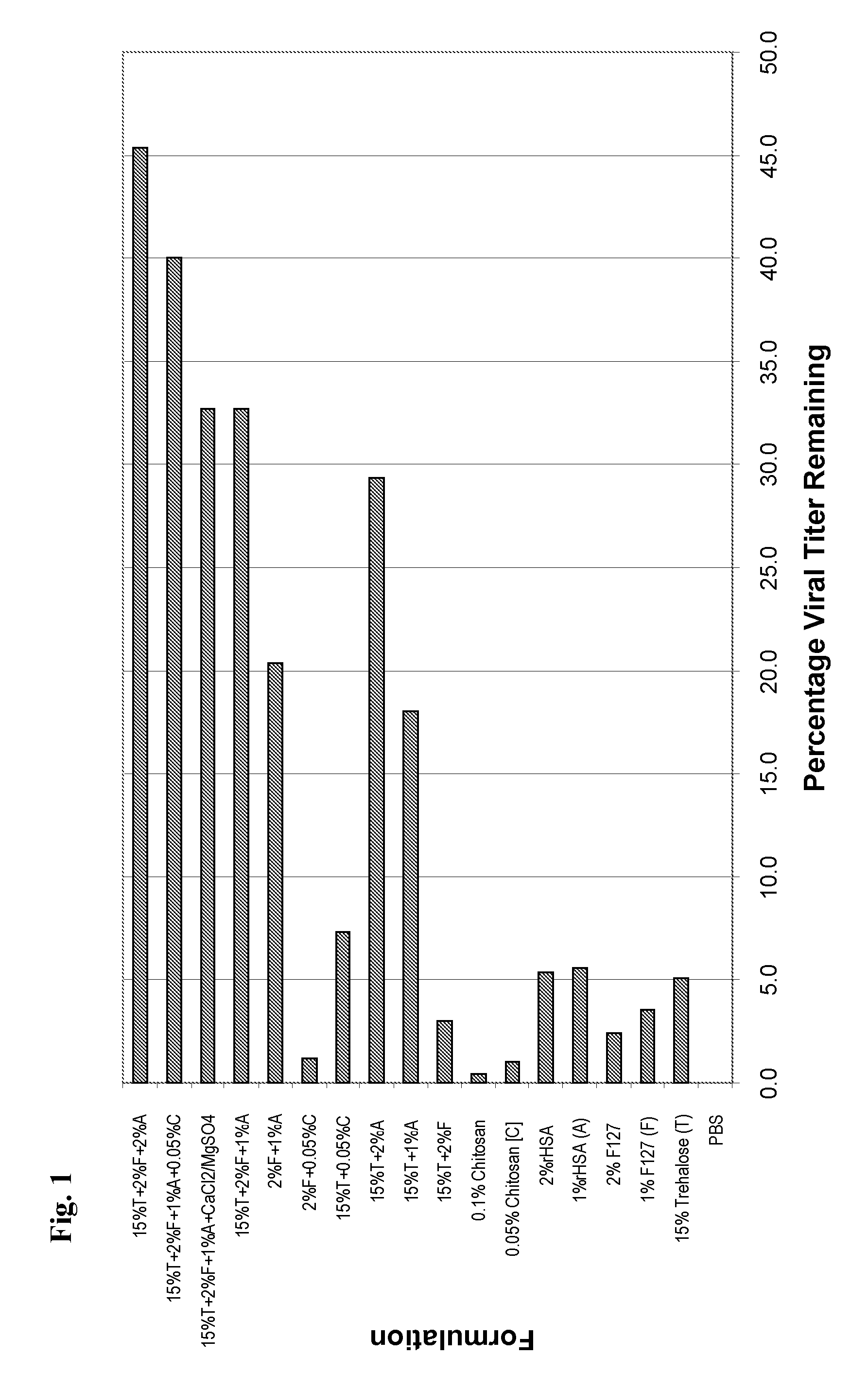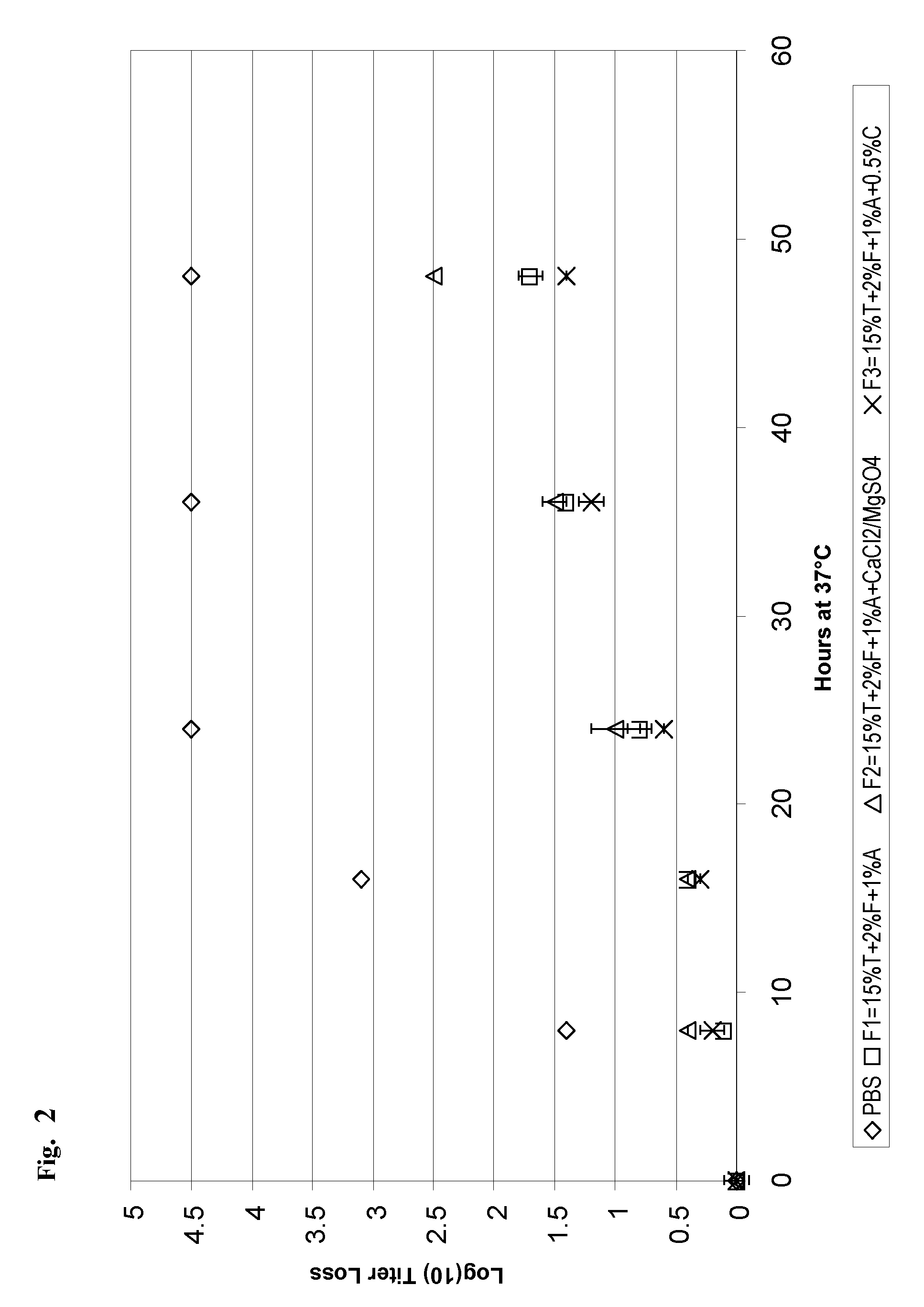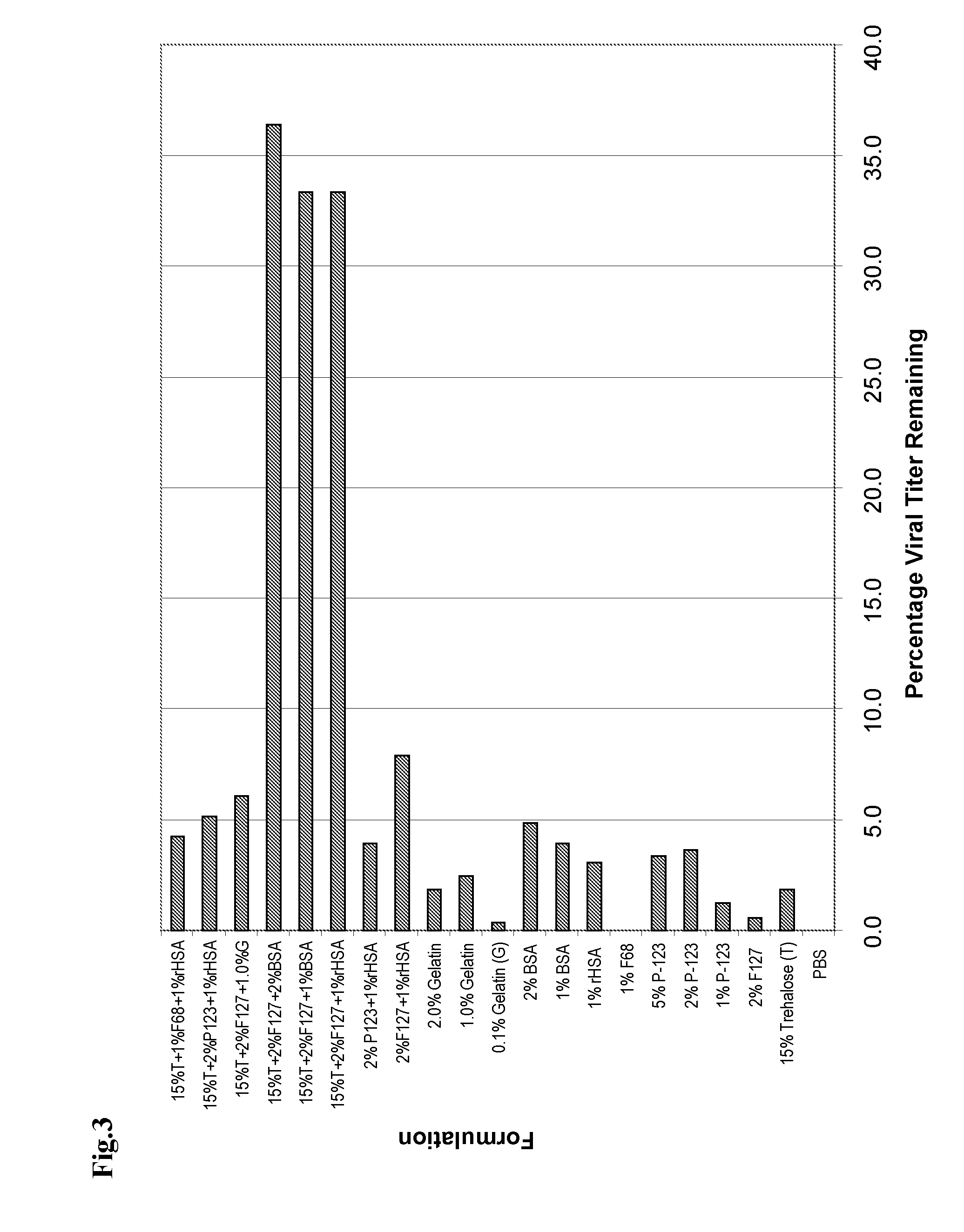Methods and compositions for live attenuated viruses
a technology of attenuated viruses and compositions, applied in the field of compositions and methods for stabilizing live attenuated viruses, can solve the problems of crippling vaccines, limited viral replication is sufficient to express full, and generates potent and long-lasting immune responses, so as to increase the stabilizing effect and assess the stabilizing effects of different types of viruses
- Summary
- Abstract
- Description
- Claims
- Application Information
AI Technical Summary
Benefits of technology
Problems solved by technology
Method used
Image
Examples
example 1
Base Stability of DEN-2 PDK 53 Flavivirus in Liquid Phase
[0076]In one illustrative method, the thermal stability for flaviviruses in liquid phase was investigated. In accordance with this method, the base stability of the DEN-2 PDK 53 parental vaccine vector, stored in phosphate buffered saline (PBS), at different temperatures was determined (Table 1). In one example, 1×104 pfu of DEN-2 PDK 53 virus in a total volume of 0.5 ml PBS was incubated, in 2 ml screw capped vials at either 4° C., room temperature (˜21° C.) or 37° C. After 24 hours of incubation viral titer and activity was determined by a Neutral Red agarose overlay plaque titration assay in Vero cells. As illustrated in Table 1, incubation of DEN-2 PDK 53 in PBS at 4° C. results in an average four-fold decrease in viral titer and complete loss in viral activity when incubated at 37° C. for the same period. These results demonstrate the relatively poor stability of the DEN-2 PDK 53 flavivirus in the absence of stabilizing e...
example 2
Stabilizing Effects of Compositions
[0078]In certain exemplary compositions, pharmaceutically acceptable excipients contemplated herein that aid in thermal stability of live viral vaccines are known in the art. In one exemplary method, PBS was used as a base composition to assess the stabilizing effects of different excipients. In these examples, a stock solution of each excipient was made in PBS and the pH adjusted to approximately 7.1 with NaOH, except for chitosan where the pH of the stock solution was adjusted to approximately 6.8. Excipients were diluted in PBS to the final concentrations indicated (w / v) (Table 2). In accordance with this method, 1×104 pfu of DEN-2 PDK 53 virus, in serum-free medium, was added to 0.5 ml of each composition and stored at 37° C. for 24 hours. Following incubation, viral activity and titer was determined by plaque titration in Vero cells, as described above. As illustrated in Table 2, the stabilizing effects of compositions including a single excip...
example 3
Stabilizing Effects of Compositions Including Specific Combinations of Excipients
[0080]In the following illustrative procedure, compositions including multiple excipients in differing combinations and concentrations were tested for stabilizing effects on the parental DEN-2 PDK 53 flaviviral vaccine. Excipients were diluted to the indicated final concentrations in PBS from stock solutions as described in Example 2. 1×104 pfu of DEN-2 PDK 53 vaccine virus was incubated at 37° C. in 0.5 ml of each composition for 21 hours (FIG. 1) or over a 48 hour period (FIG. 2). At the specified time intervals viral titer and activity was determined by a plaque titration assay as described in example 1. FIG. 1 represents exemplary results of this demonstration expressed as percentage of viral titer remaining after incubation, relative to input, and as log10 titer loss in FIG. 2. Analysis of different combinations of excipients, in this particular illustration, revealed that formulations consisting o...
PUM
| Property | Measurement | Unit |
|---|---|---|
| Time | aaaaa | aaaaa |
| Concentration | aaaaa | aaaaa |
Abstract
Description
Claims
Application Information
 Login to View More
Login to View More - R&D
- Intellectual Property
- Life Sciences
- Materials
- Tech Scout
- Unparalleled Data Quality
- Higher Quality Content
- 60% Fewer Hallucinations
Browse by: Latest US Patents, China's latest patents, Technical Efficacy Thesaurus, Application Domain, Technology Topic, Popular Technical Reports.
© 2025 PatSnap. All rights reserved.Legal|Privacy policy|Modern Slavery Act Transparency Statement|Sitemap|About US| Contact US: help@patsnap.com



